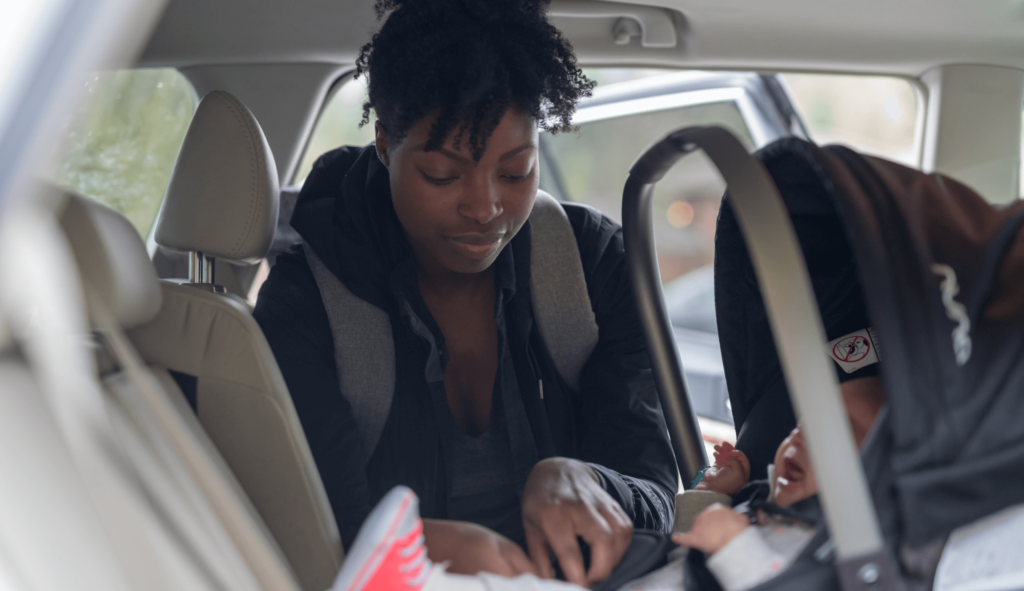Call (919) 562-1974 • info@breweriigroup.com • Client Login

Vehicle Safety for Kids of All Ages
As safe as your vehicle may feel to you, it can be very dangerous for a child. It’s important to familiarize yourself with the hazards vehicles can pose to kids of all ages. Take a look at our vehicle safety tips to see if there’s anything you need to change to prevent an accident or injury.
Driveway Accidents
Thousands of children are injured every year after being hit by a vehicle backing up or parking. According to Safe Kids USA about half of these children are between the ages of 1 and 4. To prevent the unthinkable, follow these guidelines:
- Before you start your car, walk around it and look for toys, pets or children in the vicinity.
- Back up very slowly and roll your window down to listen for children.
- Teach your children safe places to go when they see a moving vehicle—for example, the front yard or porch.
- Very young children should always be supervised outside.
Car Seats
Children as old as 12 need a car seat or booster seat to ensure maximum protection in an accident. It’s important to buy the right equipment, and it’s equally important to install the seat correctly.
- Before you buy a car seat, check the manufacturer’s instructions to ensure that it’s the right size for your child’s height and weight, and also that it will fit in your vehicle.
- Use a rear-facing car seat for as long as possible, until your child reaches the maximum height and weight.
- Keep children under age 12 in the back seat. Sitting in the front seat increases the risk of injury from hitting the dashboard or windshield, or from the deployment of the airbag.
- Car seats that have been involved in a moderate to severe crash should be discarded.
- Most car seats eventually expire. Check the manufacturer’s label on the car seat for an expiration date, or contact the manufacturer directly for expiration information.
- Read more on car seat safety at: http://www.safercar.gov/parents/CarSeats/Car-Seat-Safety.htm
Hot Weather
Safe Kids USA reports that more than 30 children die every year because they are left in a hot car. It’s simple: Do not leave children in the car, no matter what the temperature. Even a mild day can become hot very quickly inside a closed car—even if the window is cracked open. A child’s core body temperature rises three to five times faster than that of an adult, which can actually lead to death. Another concern: San Francisco State University found that one-third of all children left in a closed, parked car were done so by accident. This may occur when an adult changes his or her driving routine or is so preoccupied that he or she temporarily forgets the child is in the car. Unfortunately, this mental lapse can have devastating consequences.
- Remember these tips to keep children safe:
- If you ever see a child alone in a car, call 911.
- Place an item you will need (your cell phone, a handbag or jacket) in the backseat next to your child.
- Make a habit of checking the backseat before you lock your car.
Schedule Changes
If you know you will be changing your daily driving routine, put a note in the front seat or set an alarm on your cell phone to remind yourself that your child needs to be dropped off. Ask your sitter, day care facility or school to call you if your child has not shown up on time.
Car Entrapment
Your children may find your vehicle an attractive play spot. These suggestions may just save a child’s life:
- Always lock your vehicle, including the trunk.
- Remind children that vehicles are not to be used to play in or around.
- Store keys/remote devices in areas out of reach of children.
- If your vehicle’s trunk is equipped with an emergency trunk release, show your children where it is and how to operate it.
- If a child goes missing, check vehicles immediately.
Teen Driving
- When setting the rules for your teen driver, keep in mind the “5 to Drive”:
- No cell phones
- No extra passengers
- No speeding
- No alcohol
- Buckle up
- Clearly communicate these and other rules to your teen before they get their license, and repeat them often.
- Create a written contract with your teen that spells out your expectations and lists the consequences for breaking the driving rules.
- Model good driving habits for your teen. Never use your phone, eat, or perform other activities while driving, and avoid speeding and other reckless driving behavior.
- Make sure you and your teen are aware of the graduated driver’s licensing laws in your state. Iowa’s restrictions can be found here: http://www.ghsa.org/html/stateinfo/bystate/ia.html.
School Bus
While they may not be able to buckle up on the bus, kids can still take action to make the bus ride safer.
- Kids should line up in an orderly fashion while waiting for the bus. The line should be at least 10 feet back from the curb.
- Wait until the bus stops and the bus driver says it’s okay before heading toward the bus.
- While on the bus, don’t run, jump, yell, or stick your arms or head out the windows.
- When exiting the bus, walk in front of the bus rather than behind it. That way, the driver can see you and make sure that traffic doesn’t resume until you are safely off the road.
